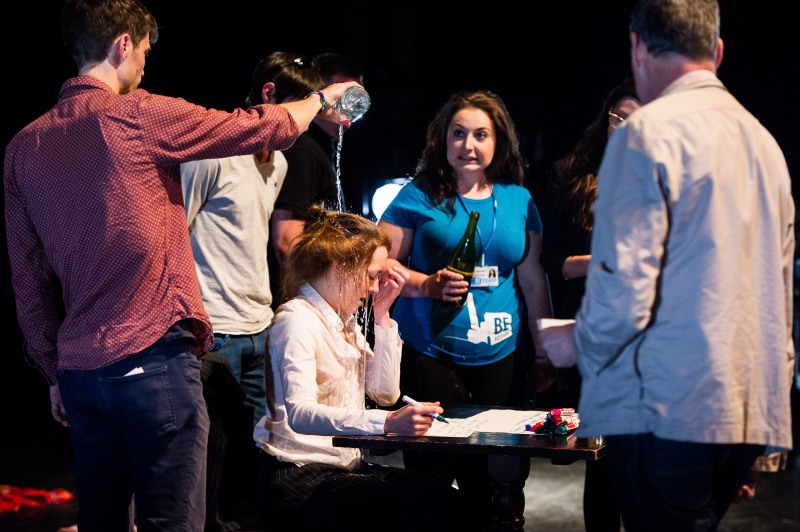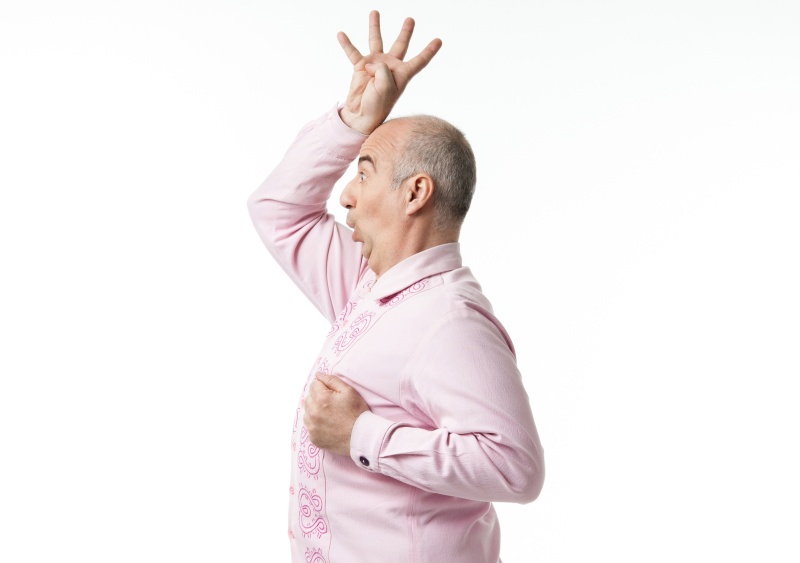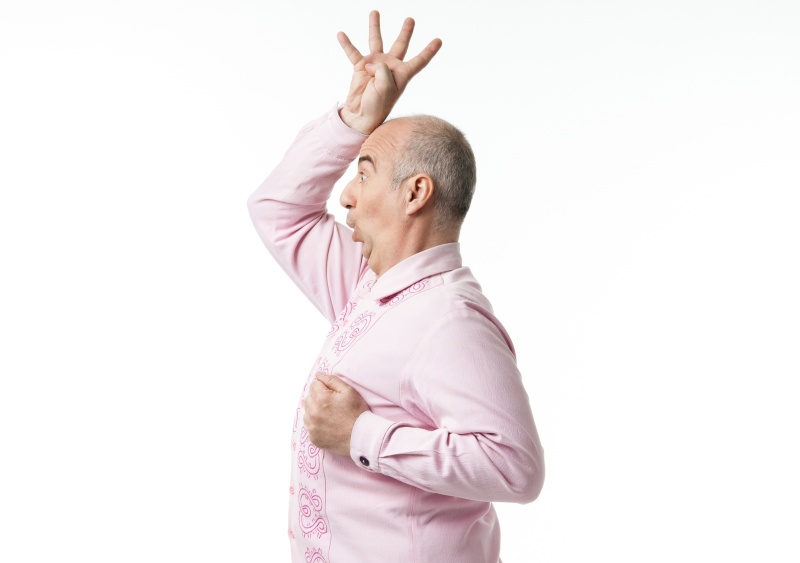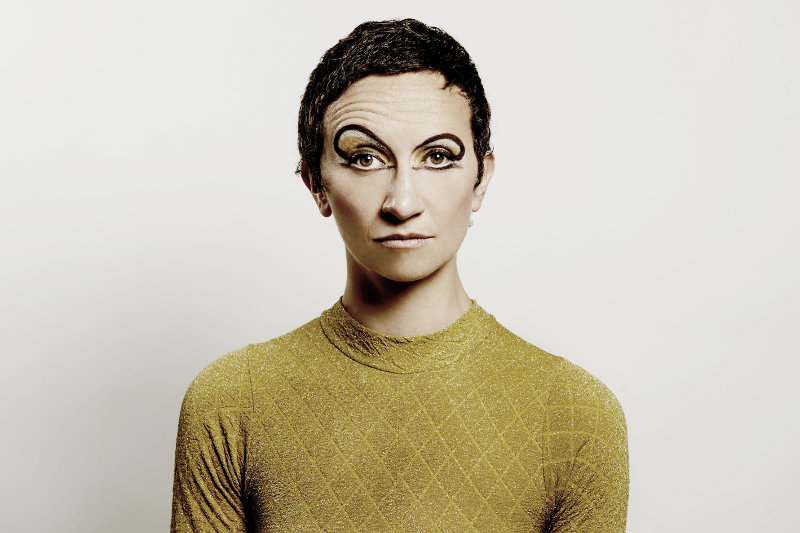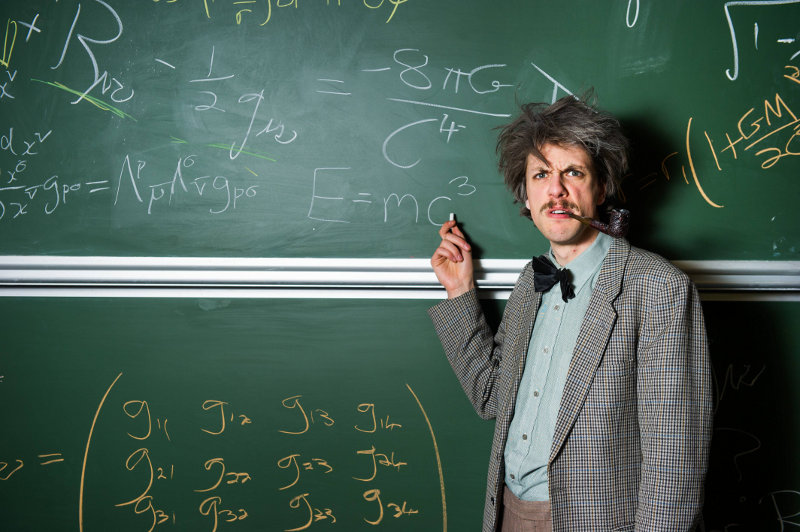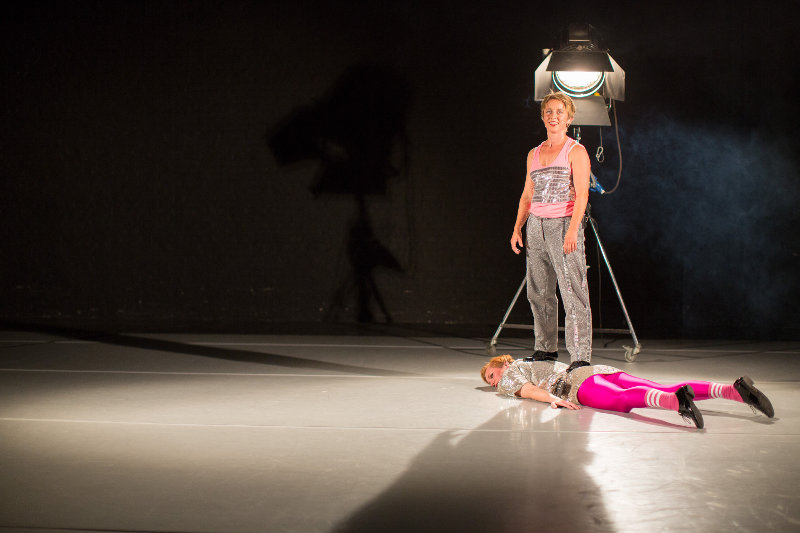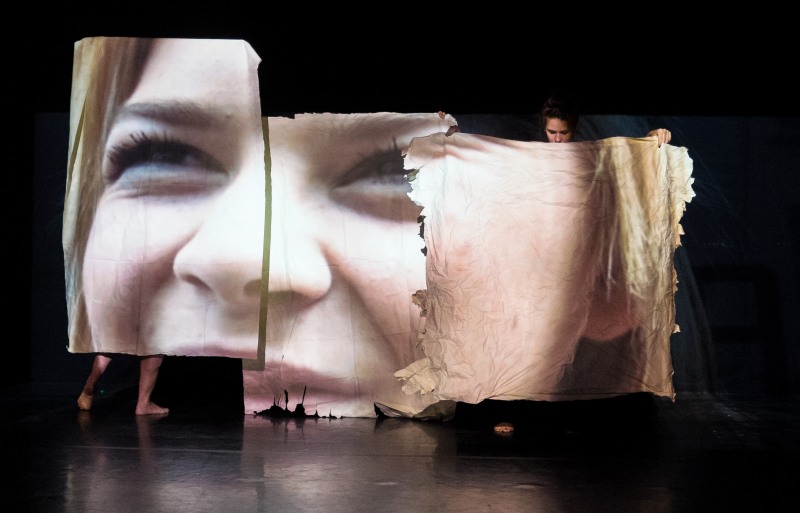
Photo by Alex Brenner
Each June, the BE (Birmingham European) Festival curates a week of original short performances from around the continent in a format that combines sharing art and food between artists and audiences at the mac theatre. Best of BE FESTIVAL, now touring, comprises three of the best new works from the festival as selected by audiences there, with a dinner-break interval to eat curry with all the artists. I was as excited by the attention to detail in creating an active environment for the audience to engage as I was by the varied programme of work on offer.
First up, from Hungary, is Radioballet’s dance solo From the Waltz to the Mambo. Performer Milan Ujvára appears in an empty space, delivering mesmerising movement quality with sparse and clean simplicity. There can be beauty in simplicity but at times I wanted greater development. The 1960s Hungarian dance manual that he holds and reads from throughout is a bit of distraction, making it hard to focus fully either on what he’s saying or on the joyous movement he is executes with such grace. This is though an interesting theme, contextualising the movement to explore preconceptions about what dance means and offering some comedic and provocative ideas. Raising questions about how we speak the language of dance from past to present is certainly exciting to think about, but the elegant simplicity of the piece felt like it closed down some of this dynamic, leaving not enough space for our own responses.
Next is a piece that certainly focuses on a space for the audience. Loops and Breaks by Julia Schwarzbach from Austria gives every member an envelope with an instruction of either an action or word to be delivered at a specific point or points during the piece. These instructions are specific to each performance, inspired by overheard conversations in each space the show visits. The room was buzzing with audience members running onto the stage to stroke, push, or hold our performer, squeeze a rubber chicken or shake a plant. All this whilst Julia Schwarzbach sits attired in a suit at a writing desk, breaking into fluid and charged choreography, punctuated by shouts such as ‘Boris Johnson!’ from the audience every time she executes a turn or ‘This is going downhill’ every time she reaches the floor. The result is a wonderful soup of absurd movement and words that is at once hilarious and joyful whilst providing a clever space in which an audience can feel safe in full participation as their role is so simple and specific; we feel intrinsic. The participation is fun and engaging, but I found myself (as perhaps inevitable considering works in his truncated format) wondering how the piece might develop. It would perhaps be interesting to give the audience a meatier amount of responsibility. The anarchic energy that seemed to be flowing under the surface might be liable to erupt in this case, but if we’re talking about breaking boundaries and roles, shouldn’t we be talking about smashing them?
A thoroughly enjoyable interval sharing food and conversation with fellow audience members and artists followed, establishing the informal and collective tone (though it was a real shame that, as the meal was not included in the ticket price, not all of the audience attended) set by the Festival Director’s chatty introduction to the evening.
Waiting by Mokhallad Rasem (former director of the National Theatre of Iraq) was our third and final piece. Inspired by his experiences as a refugee in his new home Belgium, this work sees a short film of interviews, in varied languages and voices, on the theme of waiting projected onto moving canvases that distort and warp the picture. The subject is certainly an expansive and stimulating one, with pearls of wisdom dripping from the interviewees: asylum seekers challenging the idea of life being possible while waiting, and charming elderly ladies sparkling with life as they joke about their inability to wait. I am enamoured with the people we see projected and the film opened wide spaces of thought that kept me thinking about the piece for a long time afterwards. Yet I found the intensity of the movement quality of the three performers manipulating the canvas sheets, rather distracting and misplaced. The film and unusual projection method are quite enough for me to engage with, the added performative element detracts from our ability to immerse ourselves fully and started to dictate the tone of the film. With such rich material as a subject matter, I can understand the desire to elaborate, but set alongside the earlier solo I am reminded that sometimes simplicity can be beautiful.
Best of BE is an evening of thought provoking and invigorating work in a format that encourages formal questioning and informal sharing. I look forward to seeing the full length work that emerges from these shorts.

